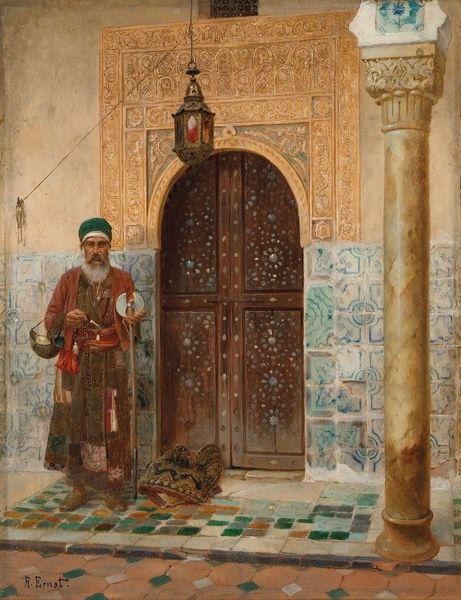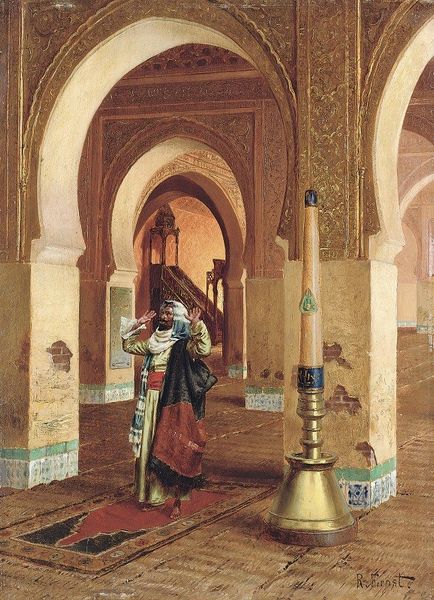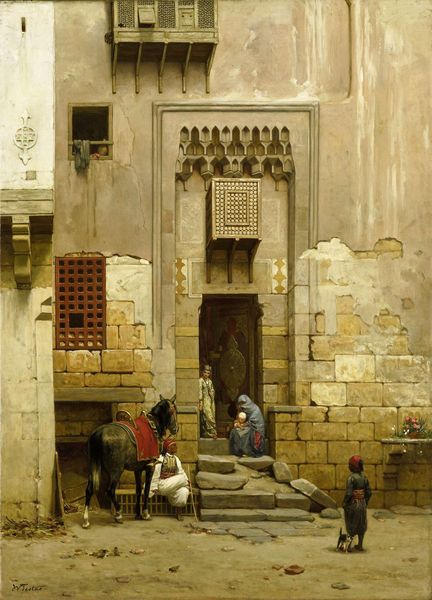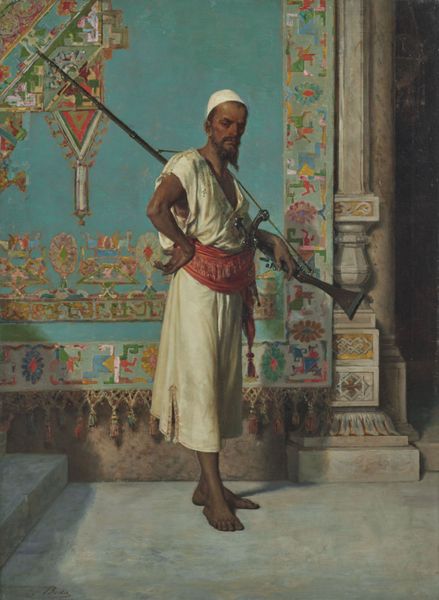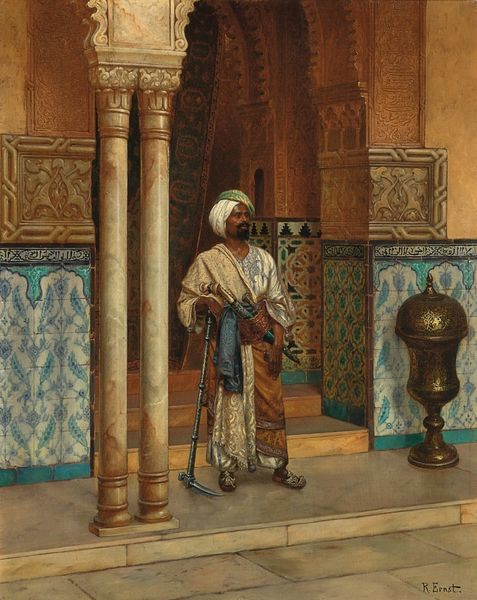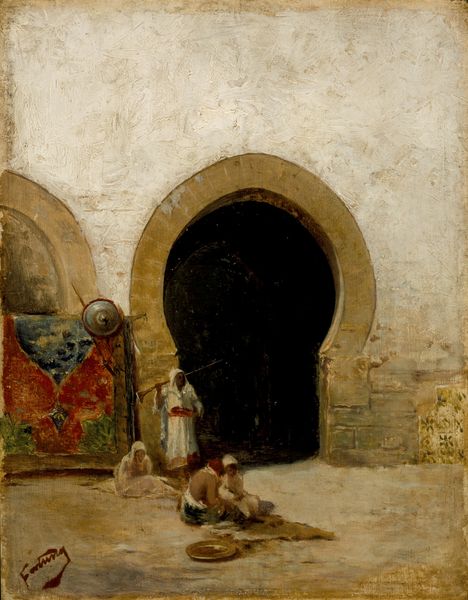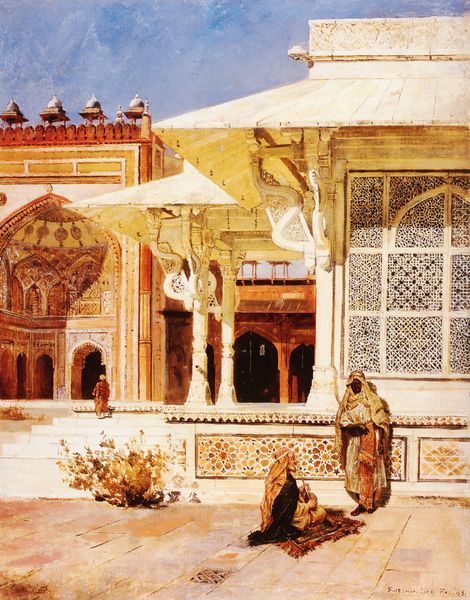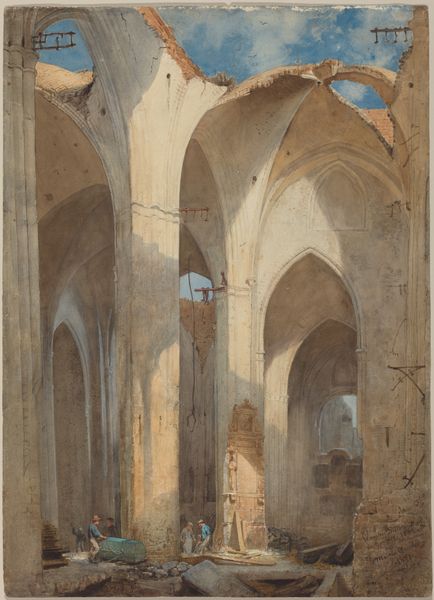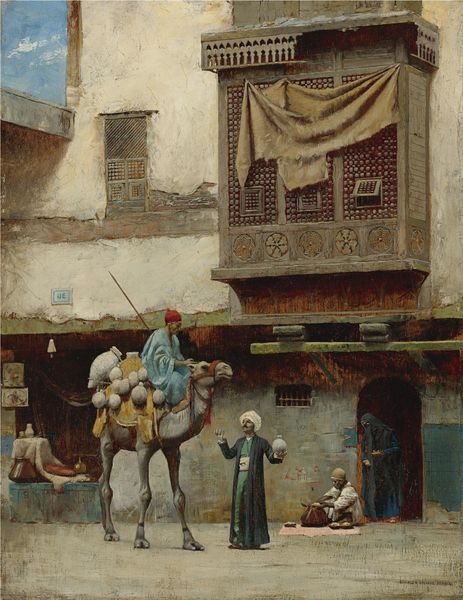
painting, watercolor
#
water colours
#
painting
#
landscape
#
watercolor
#
coloured pencil
#
orientalism
#
cityscape
#
islamic-art
#
genre-painting
#
watercolor
#
realism
#
building
Copyright: Public domain
Editor: This is “Patio. At the Alhambra,” painted in 1860 by Achille D’Orsi. The attention to architectural detail is stunning. What story do you think D'Orsi is telling here? Curator: This work sits squarely within Orientalism, a 19th-century European fascination with the "East." It presents the Alhambra not simply as a beautiful architectural space, but also engages with power dynamics inherent in that representation. Consider the lone figure – his pose suggests a passive servitude. Editor: That's an interesting perspective. I hadn’t considered that his stance could reflect social dynamics beyond just a genre painting. Curator: Exactly. We have to ask: Whose gaze are we seeing through? And what is being emphasized, or even erased, in this encounter between European artistic vision and Moorish space? The artist is using watercolor and colored pencil to define the scene. What’s your impression of how the artist chooses to use these materials to communicate his position, or his cultural perspective? Editor: I notice how the light and shadow almost isolate the man, casting him in a subdued way. It makes me question whether the artist truly intended to depict an authentic representation, or perhaps reinforce a biased narrative. Curator: Precisely! The detail is incredible. But look at the sharp contrasts. Are they simply aesthetic choices, or are they metaphors for the division the West has fabricated between itself and the East, constructing it as "other"? Editor: I’m beginning to see this isn’t just a beautiful depiction. I initially perceived it as neutral documentation, but it is a constructed viewpoint loaded with the power dynamics of the time. Thanks, that gave me a lot to think about! Curator: Absolutely! Always question whose story is being told and why.
Comments
No comments
Be the first to comment and join the conversation on the ultimate creative platform.
